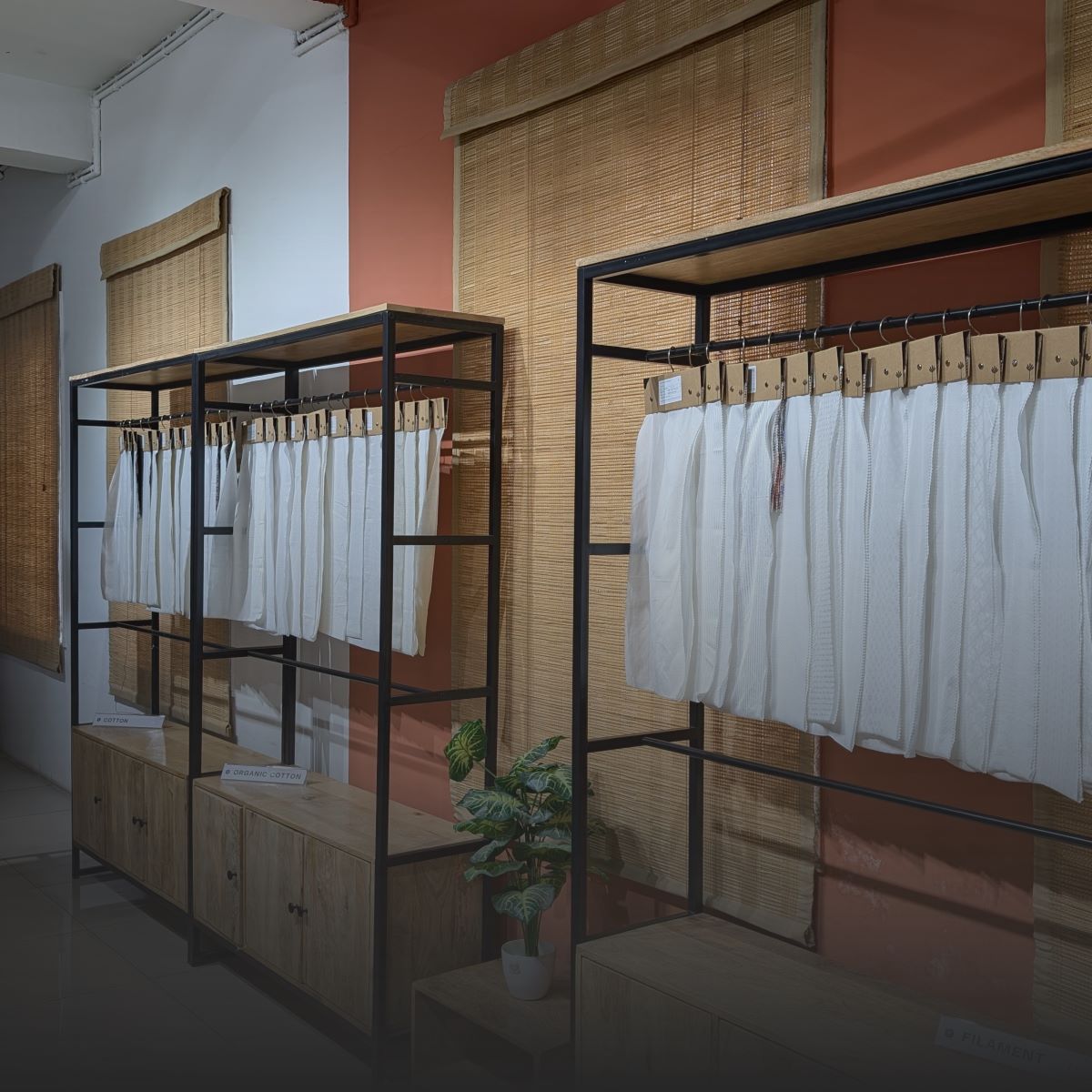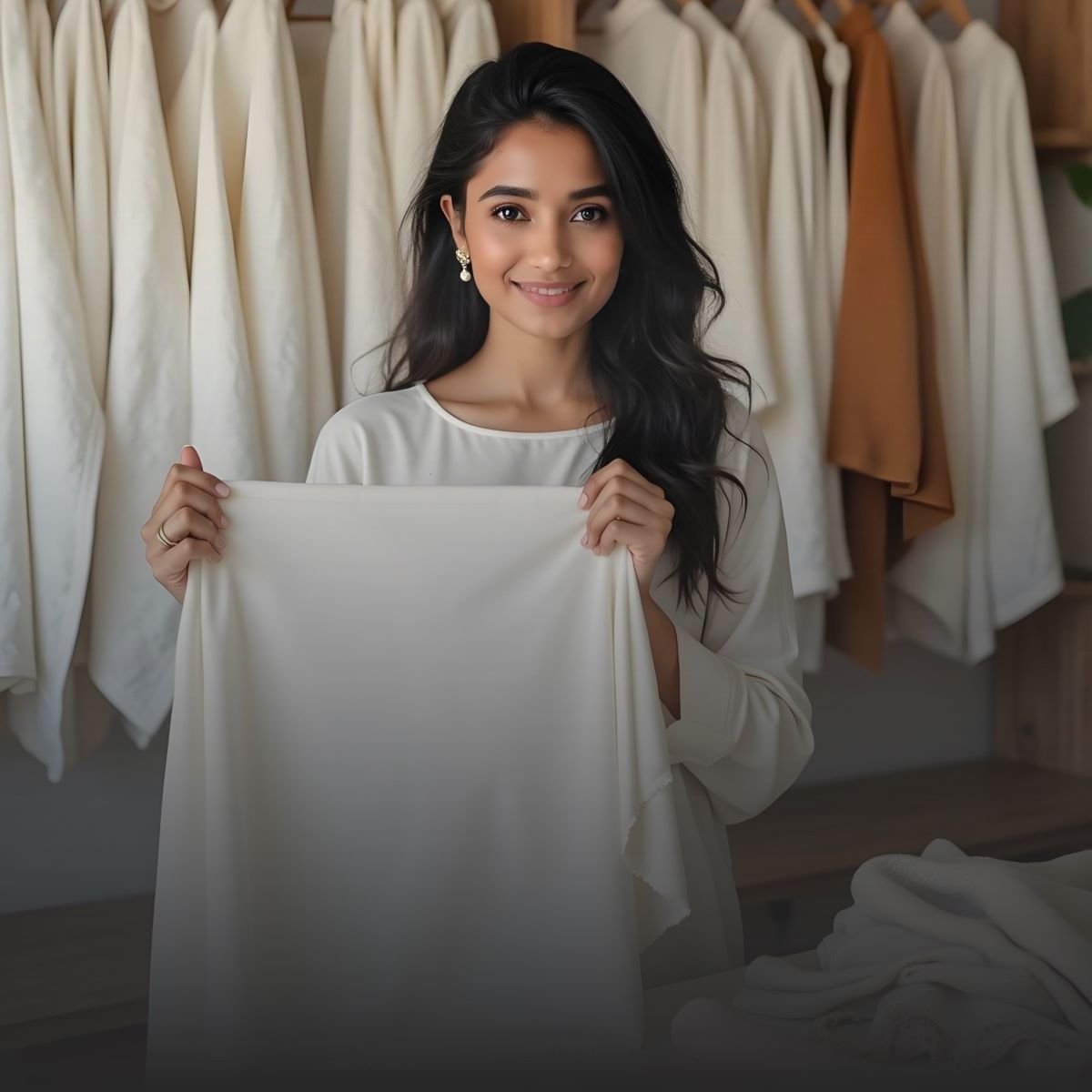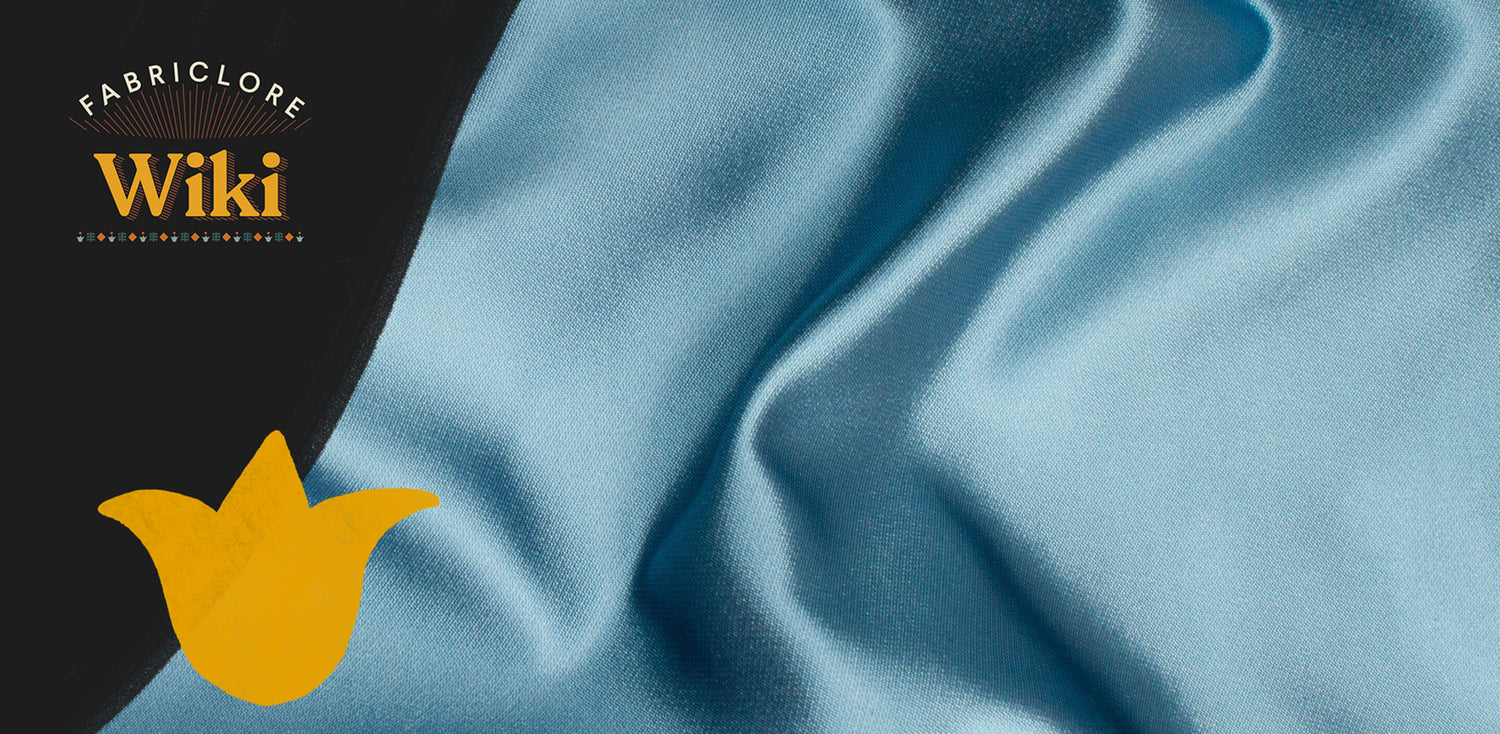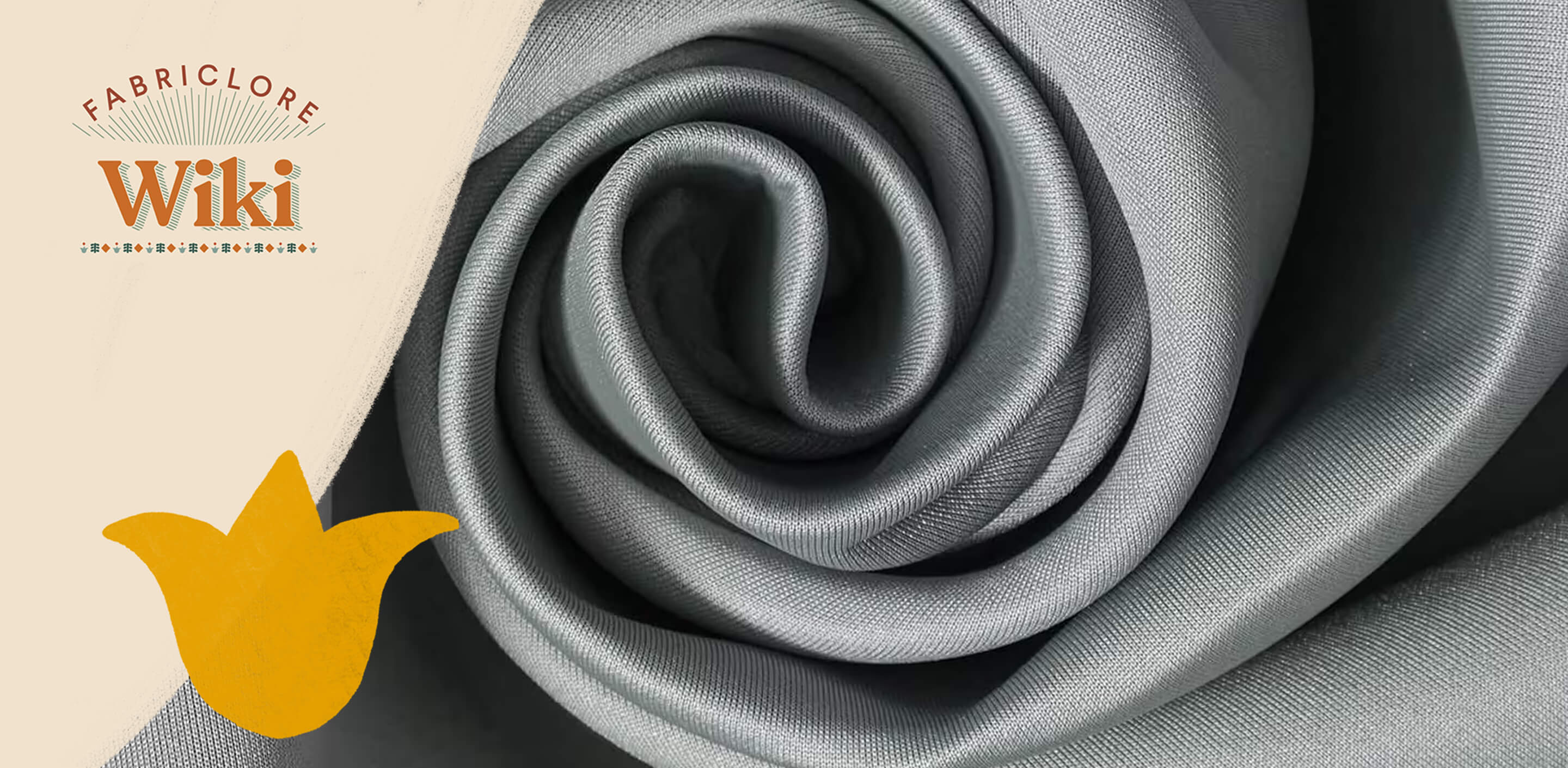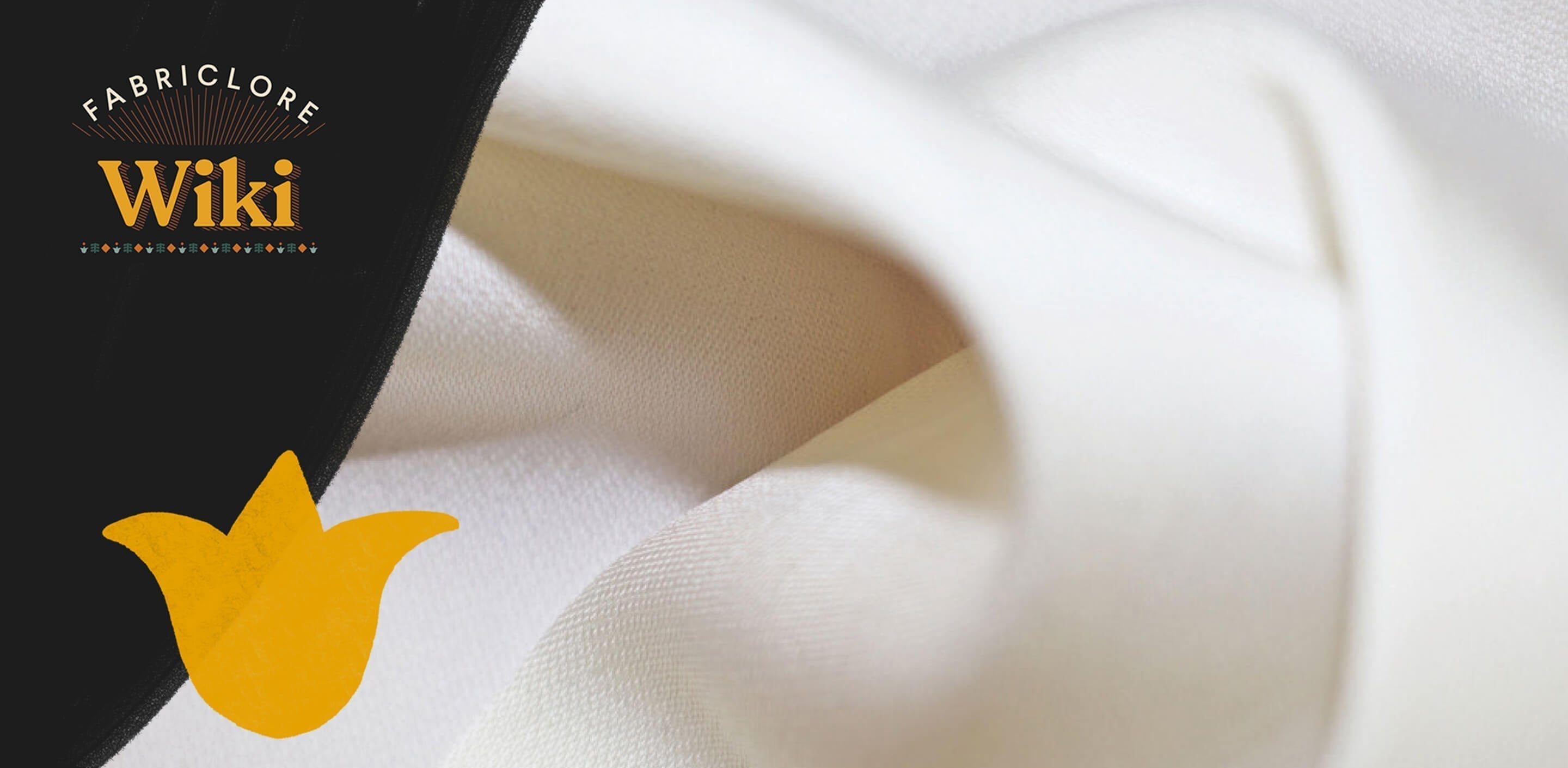Shantung fabric is unique in the world of textiles because it looks expensive and has a long history. It used to be made of silk, but now it's also made from synthetic fibres and cotton blends. It can be used in fashion, home decor, traditional crafts, and accessories. Shantung is a classic fabric that will always look good, whether you're a designer looking to make your line more sophisticated or a fabric lover looking to try out new types.
What Is Shantung Fabric?

A traditional type of plain weave fabric made from silk, Shantung has irregular slubs (differences in the yarn thickness) that give the surface a textured look. For Shantung's signature bumpy look, these slubs are caused by using uneven yarns during the weaving process. They were originally made of silk, but modern versions may use synthetic fibres like polyester to make them cheaper.
What Is The History Of Shantung Fabric?
The Shandong region of China is where shantung cloth comes from. This region is famous for making silk in the past. In the West, it became famous in the 1800s and 1900s, especially for wedding and office wear. It became associated with wealth and style thanks to its rough look and natural shine.
How Is Shantung Fabric Made?
Traditionally, Shantung is made from raw silk fibres, particularly from the wild silkworms that create irregularly shaped cocoons. These fibres are minimally processed to retain their natural slubs. Contemporary versions may also use blends of polyester, rayon, or cotton to mimic the texture of silk while offering affordability and durability.
Composition And The Making Process
-
Materials Used: The materials used are silk fibers from wild silk cocoons, which is how traditional Shantung is made. But to meet the needs of a wide range of customers, companies have created blends using manufactured fibres such as polyester and rayon.
-
Weaving Method: Shantung has a unique texture that comes from its plain weave structure and the use of uneven weft yarns. The characteristic slubs are made of these uneven yarns, which make the fabric both crisp and textured.
To make Shantung fabric, you have to use a special weaving method:
- Collection of raw silk: taken from silkworm cocoons.
- Spinning with threads: That aren't all the same thickness: Threads of different thicknesses are used on purpose.
- Plain weave: A simple over-under method is used to weave the fabric.
- Minimal finishing: Not much is done after weaving to keep the natural texture.
Shantung has a slubbed surface because of this method, which makes it different from silks that are smoother.
Properties Of Shantung Fabric
People love shantung cloth for its unique texture, beautiful look, and ability to be used in many ways. This fabric comes from the Shandong province in China. It is usually made from silk and has a lot of great qualities that make it good for both high-end fashion and elegant home decor. Here is a full list of its most important features:
- Textured yet elegant: The slubs give it a rustic charm.
- Lightweight and breathable: Ideal for warm weather.
- Crisp drape: Holds shapes beautifully for structured garments.
- Glossy finish: Reflects light, enhancing its opulence.
- Resilient: Surprisingly durable for its delicate appearance.
Types Of Shantung Fabric

There are different kinds of shantung fabric based on the fibers used, how it is sewn, how it is finished, and what it will be used for. The traditional one is made of silk, but thanks to modern progress, there are now a number of different types to meet the needs of different markets. Here is a full list of the different kinds of Shantung fabric that you can buy right now:
- Silk Shantung: The most luxurious, used in fashion.
- Polyester Shantung: Affordable and wrinkle-resistant, ideal for event decor.
- Cotton Shantung: Breathable with a matte finish, suitable for casual wear.
What Is Shantung Fabric Used For?
Shantung cloth is popular among designers in many fields because of its crisp texture, soft sheen, and beautiful slubs. It can be used for both high-end fashion and home decor because it is versatile and has a unique look. Here is a full list of all the ways Shantung fabric can be used:
1. Fashion and Apparel
Shantung is used a lot in fashion because it has a lot of texture and drapes beautifully. Here are some popular ways it is used:
- Evening Wear & Cocktail Dresses: Shantung is great for make-up because it has a slight sheen and an organized body. It keeps its shape beautifully, making gowns, party dresses, and girl dresses look very elegant.
- Wedding Attire: A lot of brides choose shantung silk for their dresses, veil, and wedding party clothes. It looks expensive and feels comfortable, and it breathes well.
- Blouses and Tops: Shantung is a light fabric that looks great on tops and shirts and adds a touch of class to everyday clothes.
- Suits and Jackets: Shantung is structured, which makes it good for tailored clothes like suits and jackets for women who need to have both shape and style.
2. Accessories
Shantung's texture and good looks make it perfect for many fashion accessories:
- Handbags & Clutches: The slight stiffness and texture of the fabric help make organized and classy bags.
- Shoes: Shantung is sometimes used for heels and flats that are covered in fabric in wedding and formal collections.
- Neckties & Bowties: Shantung is used to make stylish formal accessories for guys. It has a soft sheen and fine slubs.
3. Interior Design and Home Décor
There are also high-end interiors that use shantung fabric:
- Upholstery: Strong fabrics last longer than Shantung, but it's only used for chairs, ottomans, and accent pieces that are meant to look nice instead of being sturdy.
- Curtains & Drapes: Window treatments in traditional living rooms or bedrooms look especially beautiful when they are made of Shantung and have a crisp fall.
- Cushions & Pillows: Decorative throw pillows made of Shantung cloth add shine and texture to sofas and bedding sets.
- Lampshades: Shantung silk is often used by designers to make custom lampshades that give off a soft, warm glow.
4. Costume Design & Theatre
Shantung is often used in theatre shows, dance costumes, and historical reenactment clothes because it looks good and can hold its shape. It gives you a real, royal look on stage without being too heavy.
5. Craft and DIY Projects
Makers love Shantung because it has a unique feel and can be used in many ways. It's used to make:
- Quilts (decorative rather than functional)
- Fabric wall art
- Fabric flowers and embellishments
The Environmental Impact Of Shantung Fabric

Natural fibers like silk shantung break down naturally and leave less of an impact on the earth than synthetic fabrics. But silk is made from silkworms, which makes some people think about whether or not it is moral to buy silk. Even though synthetic versions are cheaper, they come from petrochemicals and aren't as good for the environment.
How To Sew Shantung Fabric?
To sew Shantung, you need to be careful:
- Use sharp microtex needles to avoid snags.
- Employ a short stitch length (2.0–2.5 mm).
- Avoid over-handling to prevent fraying.
- Use silk or polyester thread for strength and invisibility.
Before starting on the main piece, it's best to test on scraps.
How To Care For Shantung Fabric?
With the right care, Shantung can live longer:
- Dry cleaning is preferred, especially for silk.
- If washing at home, hand wash in cold water using a mild detergent.
- Avoid wringing or twisting the fabric.
- Air dry flat and iron inside-out on low heat with a press cloth.
Is Shantung Fabric Washable?
To keep its smoothness and shine, silk shantung should be best dry-cleaned. Check the label to see if polyester ones can be washed in a machine in a gentle setting. For all kinds, washing your hands is safer.
Does Shantung Fabric Shrink When You Iron It?
Yes, silk Shantung may shrink when it gets really hot. Always:
- Use a press cloth.
- Set the iron to a low-silk setting.
- Iron is on the reverse side.
- Avoid steam unless tested on a scrap piece.
Comparison Table: Shantung vs. Similar Fabrics
While Shantung is commonly confused with Dupioni, Taffeta, or Organza, each fabric is different. Shantung's slubbed texture is firmer than Dupioni's slubs, giving it a rustic character. Shantung drapes more fluidly than Taffeta but still has a body. Organza is sheer and rigid, utilized for overlays and decoration. Thus, its use is different. Shantung is perfect for fashion and home decor because it combines elegance with rough texture. Satin is rich and smooth. Choose a fabric based on drape, texture, sheen, and use.
|
Feature / Fabric |
Shantung |
Dupioni Silk |
Taffeta |
Organza |
Satin |
|
Texture |
Slightly rough with irregular slubs |
Coarser with more prominent slubs |
Smooth and crisp |
Sheer, stiff and lightweight |
Smooth, glossy on one side |
|
Sheen |
Subtle sheen |
Moderate sheen |
High sheen |
Slight shimmer |
High shine |
|
Weight |
Lightweight |
Medium-weight |
Medium-weight |
Very lightweight |
Medium to heavyweight |
|
Drape |
Moderate drape |
Moderate drape |
Crisp drape |
Stiff drape |
Fluid drape |
|
Made From |
Silk, polyester, or blends |
Usually silk |
Silk or synthetic fibers |
Silk or synthetic fibers |
Silk, polyester, or nylon |
|
Best For |
Dresses, blouses, suits |
Formal wear, bridal dresses |
Evening gowns, structured dresses |
Wedding gowns, overlays |
Evening wear, linings |
|
Feel Against Skin |
Soft but slightly textured |
Rougher texture |
Crisp, slightly stiff |
Stiff and slightly scratchy |
Very smooth and soft |
|
Wrinkle Resistance |
Wrinkles moderately |
Wrinkles easily |
Holds shape well, can wrinkle |
Wrinkles easily |
Low to moderate wrinkling |
|
Cost |
Moderate |
Expensive |
Moderate to high |
Moderate |
Ranges from moderate to high |
Conclusion

Shantung fabric has a luxurious sheen, delicate slubs, and crisp texture that makes it a classic. Because it can make clothes and rooms look better, designers who want to find a mix between style and durability use it all the time. Shantung is elegant and lasts for a long time, whether you use it for a wedding dress, curtains, or a fashion line.
✨ Looking to source high-quality Shantung fabric? Choose eco-friendly silk options from trusted textile suppliers to ensure quality and sustainability.
FAQs
1. Is Shantung fabric good for summer wear?
Yes, especially ones that are a mix of silk and cotton. It's thin and airy, so it's great for warm places.
2. Can I dye Shantung fabric at home?
Silk Shantung takes dye very well, but getting it dyed by a professional makes sure that the results are even and that the color will last.
3. What needle is best for sewing Shantung?
A sharp microtex or fine universal needle (size 60/8 or 70/10) works best.
4. Is Shantung fabric expensive?
Silk Shantung can be pricey due to its natural origin, while polyester versions are more affordable.
5. Can Shantung be used for upholstery?
Yes, though, it is better suited for decorative rather than high-traffic furniture due to its delicate weave.
We also happen to be a magnet for suggestions, and would love to catch yours….throw us yours on hello@fabriclore.com
